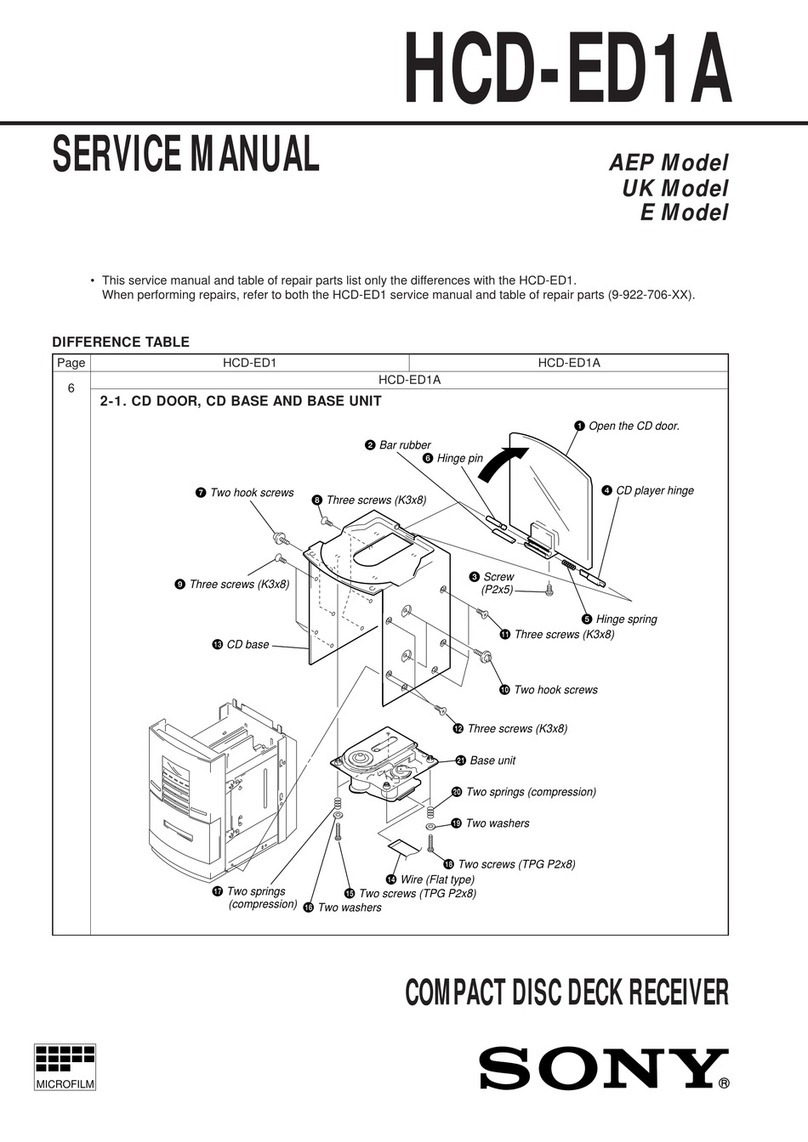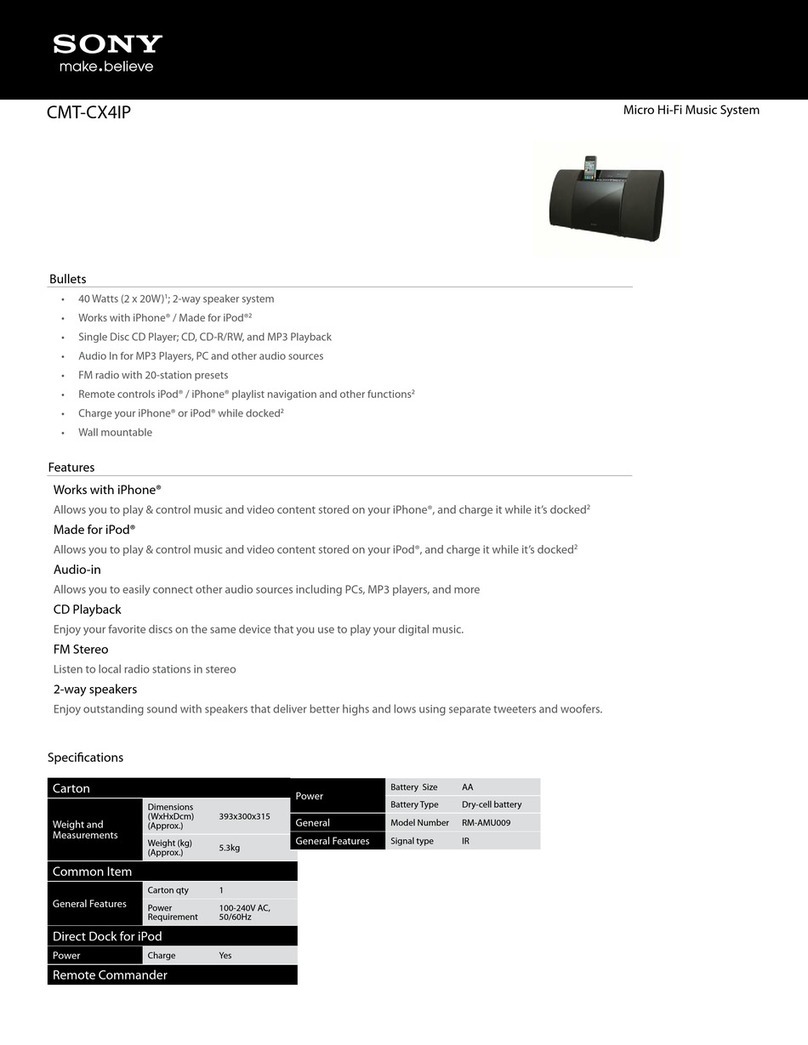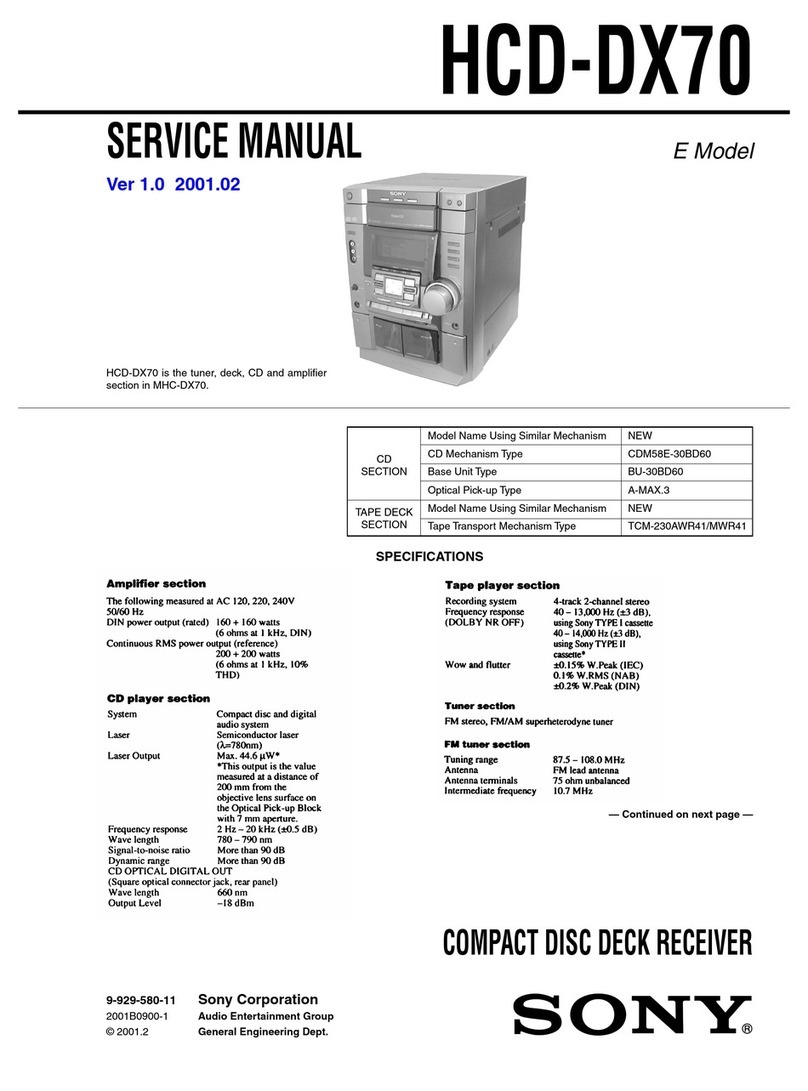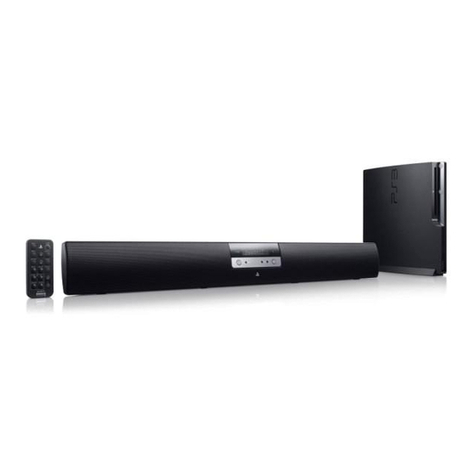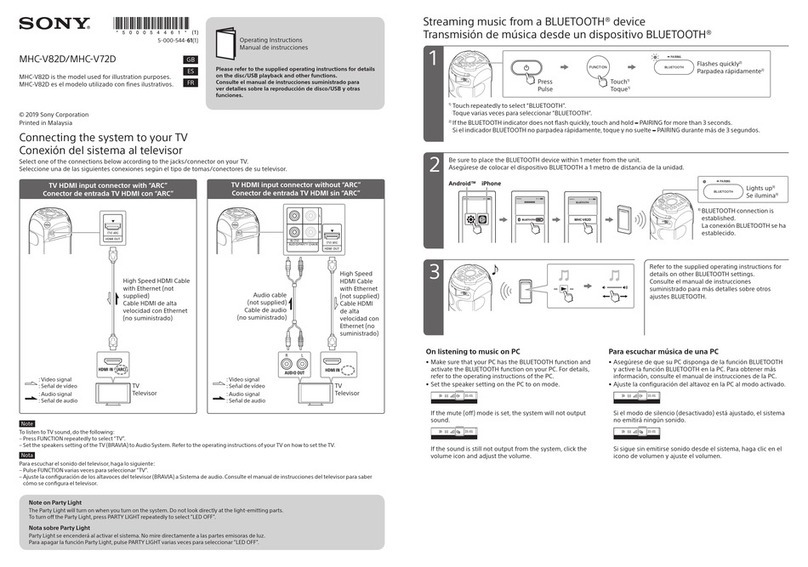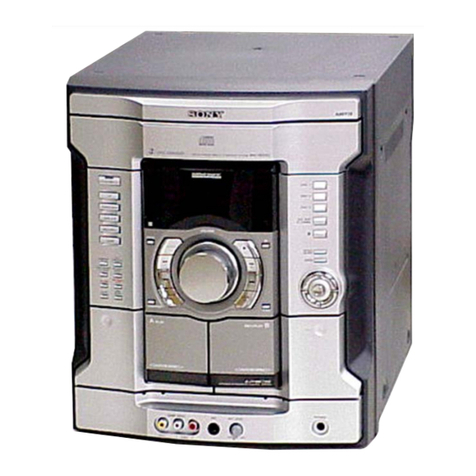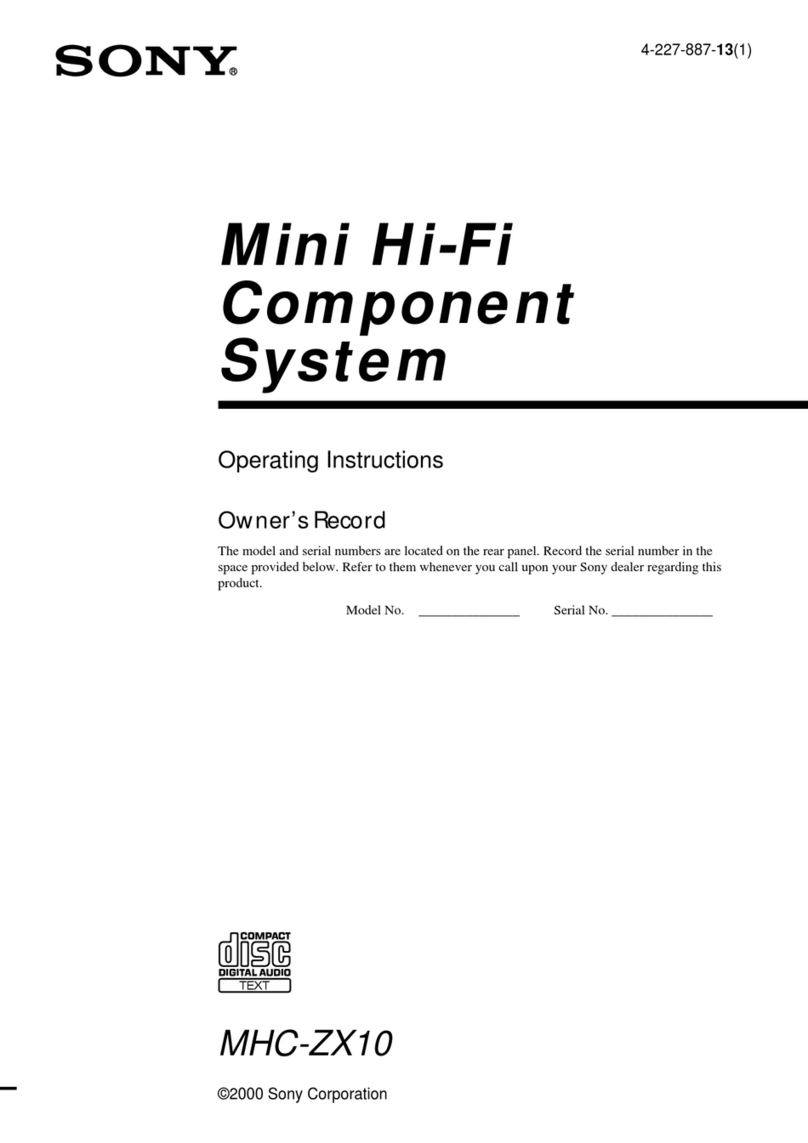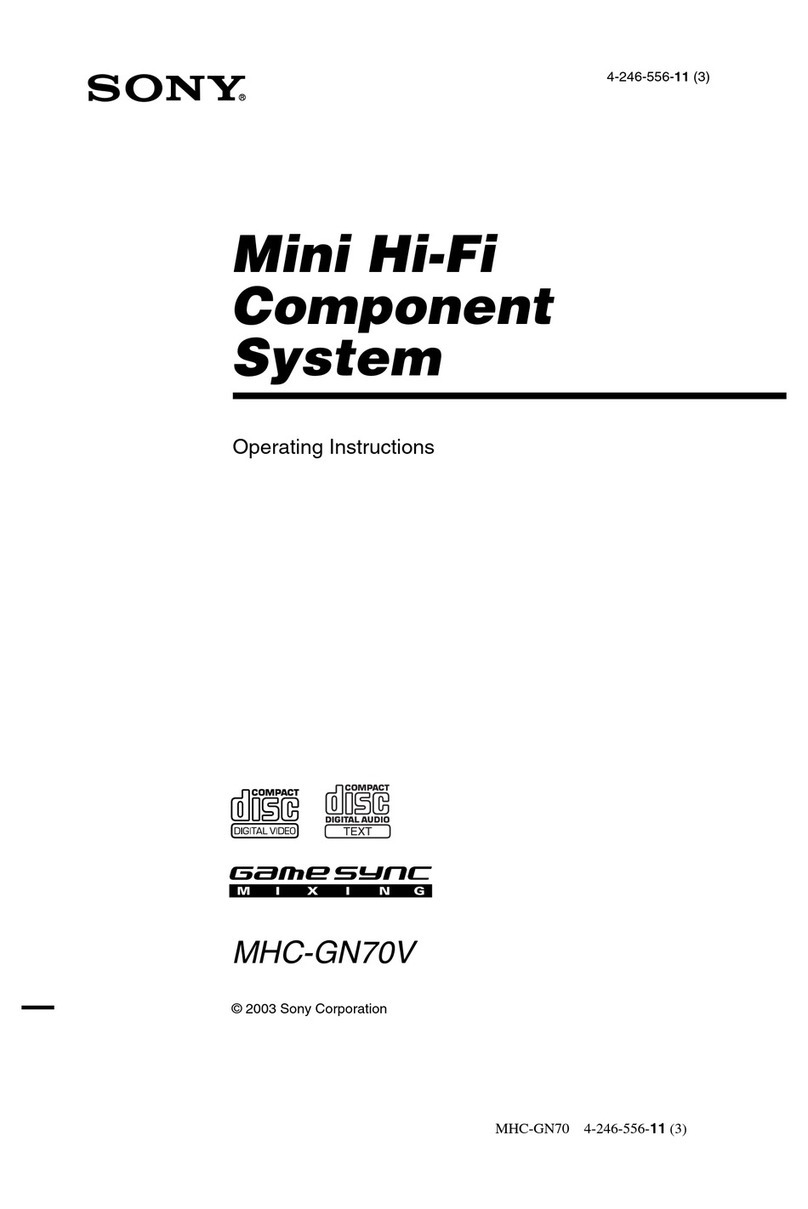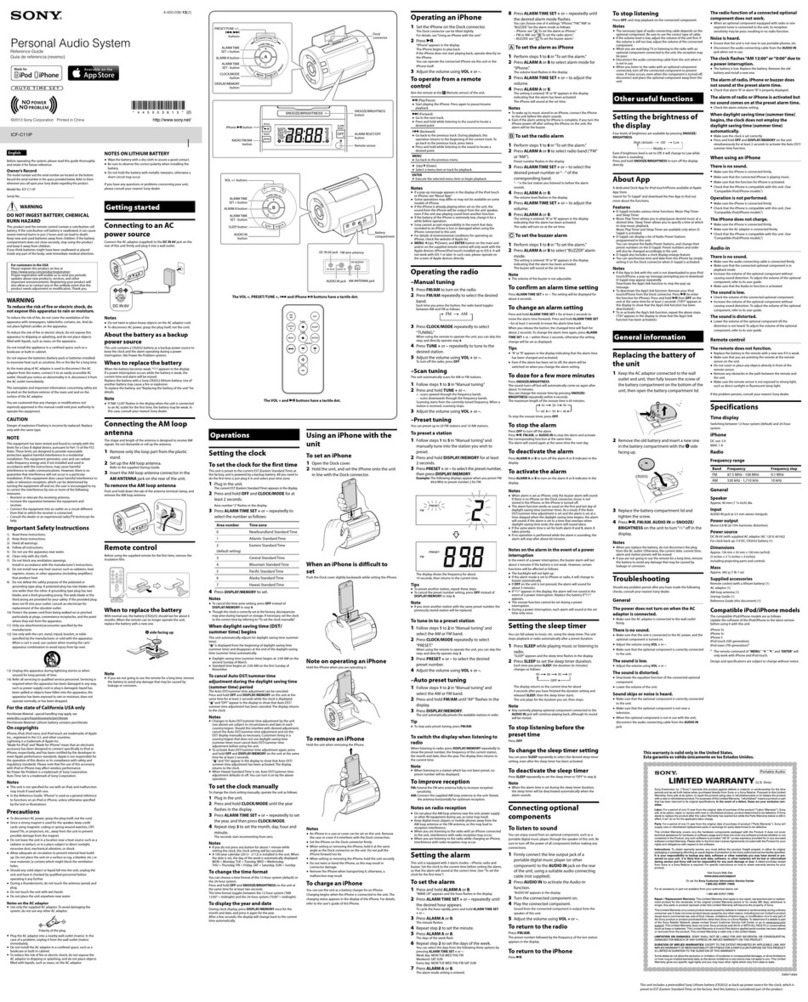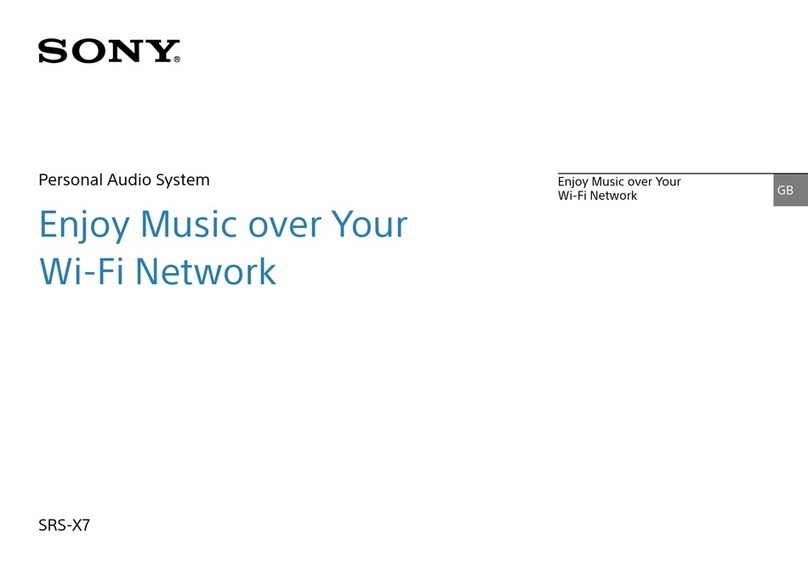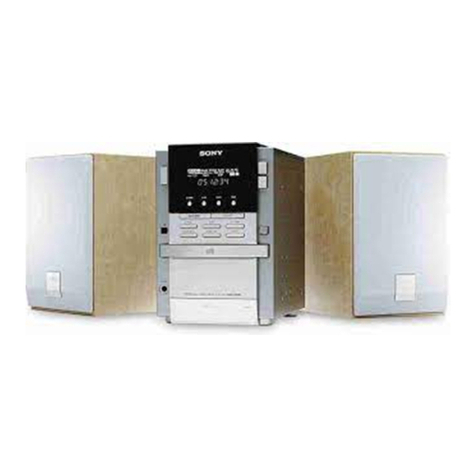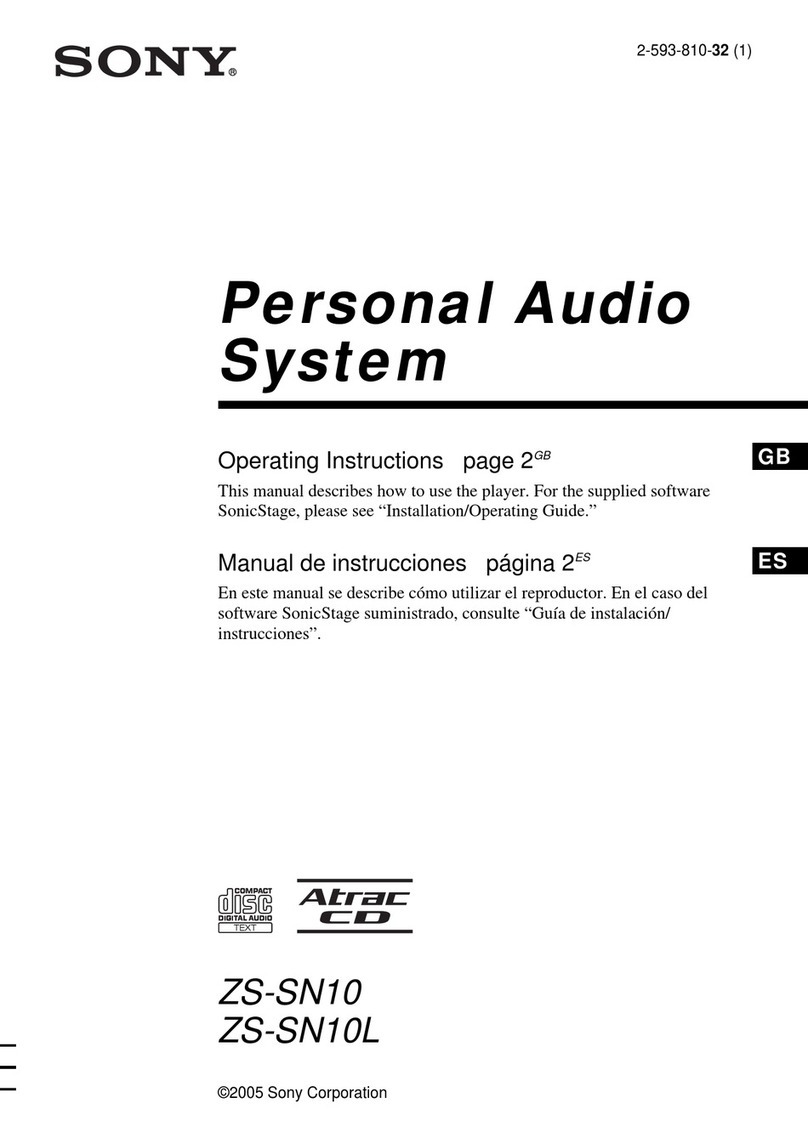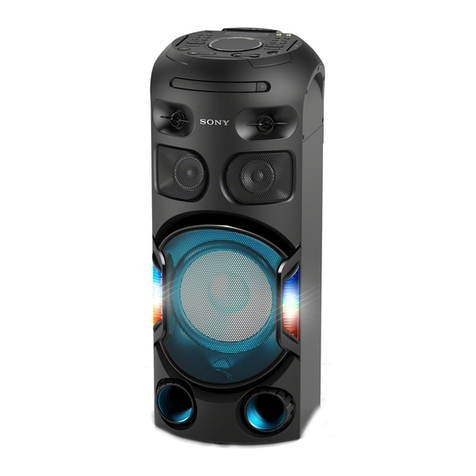
1
HCD-VX99
SERVICE MANUAL
HCD-VX99 is the tuner, deck, CD and amplifier
section in MHC-VX99.
SPECIFICATIONS
COMPACT DISC DECK RECEIVER
— Continued on next page —
Model Name Using Similar Mechanism HCD-VX77/VX77J
CD Mechanism Type CDM58-K2BD37A
Base Unit Type BU-K2BD37A
Optical Pick-up Type KSM-213DAP/Z-NP
Model Name Using Similar Mechanism HCD-VX77/VX77J
Tape Transport Mechanism Type TCM-230PWR11
CD
SECTION
TAPE DECK
SECTION
E Model
Amplifier section
The following measured at AC 120, 220, 240V
50/60 Hz
DIN power output (rated) 220 + 220 W
(4 Ωat 1 kHz, DIN)
Continuous RMS power output (reference)
300 + 300 W
(4 Ωat 1 kHz,
10% THD)
Inputs
MD/VIDEO (AUDIO) IN:voltage 450 mV/250 mV,
(phono jacks) impedance 47 kΩ
MIC: sensitivity 1 mV,
(phone jack) impedance 10 kΩ
Outputs
VIDEO OUT: max. output level 1 Vp-p,
(Phono jack) unbalanced, Sync
negative, load impedance
75 Ω
S-VIDEO OUT: Y: 1 Vp-p, unbalanced
(4 pin/mini-DIN jack) Sync negative
C: 0.286 Vp-p
load impedence 75 Ω
PHONES: accepts headphones of 8
(stereo mini jack) Ωor more
FRONT SPEAKER: accepts impedance of 4 to
16 Ω
VIDEO CD/CD player section
System Compact disc and digital
audio system
Laser Semiconductor laser
(λ=780nm)
Emission duration:
continuous
Laser output Max. 44.6
µ
W*
*This output is the value
measured at a distance of
200 mm from the
objective lens surface on
the Optical Pick-up Block
with 7 mm aperture.
Frequency response 2 Hz – 20 kHz (±0.5 dB)
Wavelength 780 – 790 nm
Signal-to-noise ratio More than 90 dB
Dynamic range More than 90 dB
Video color system formatNTSC, PAL
CD OPTICAL DIGITAL OUT
(Square optical connector jack, rear panel)
Wavelength 660 nm
Output Level –18 dBm
Tape player section
Recording system 4-track 2-channel stereo
Frequency response
(DOLBY NR OFF) 40 –13,000 Hz (±3 dB),
using Sony TYPE I
cassette
Tuner section
FM stereo, FM/AM superheterodyne tuner
FM tuner section
Tuning range 87.5 –108.0 MHz
Antenna FM lead antenna
Antenna terminals 75 Ωunbalanced
Intermediate frequency 10.7 MHz
AM tuner section
Tuning range
Middle East model: 531 –1,602 kHz
(with the interval set at 9
kHz)
Other models: 531 –1,602 kHz
(with the interval set at 9
kHz)
530 –1,710 kHz
(with the interval set at 10
kHz)
Antenna AM loop antenna
Antenna terminals External antenna terminal
Intermediate frequency 450 kHz
w
w
w
.
x
i
a
o
y
u
1
6
3
.
c
o
m
Q
Q
3
7
6
3
1
5
1
5
0
9
9
2
8
9
4
2
9
8
T
E
L
1
3
9
4
2
2
9
6
5
1
3
9
9
2
8
9
4
2
9
8
0
5
1
5
1
3
6
7
3
Q
Q
TEL 13942296513 QQ 376315150 892498299
TEL 13942296513 QQ 376315150 892498299
http://www.xiaoyu163.com
http://www.xiaoyu163.com
